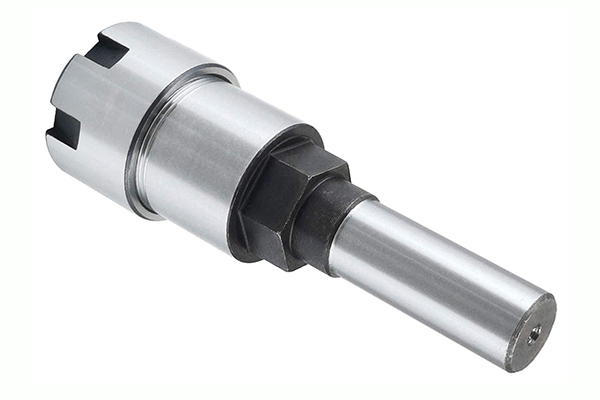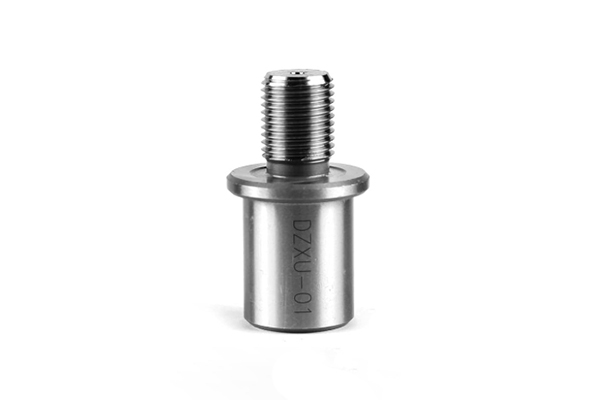Welcome to a deep dive into a small but mighty component of your workshop: the router bit shank. My name is Allen, and as the owner of a factory with seven production lines specializing in high-precision drilling tools, I’ve spent decades focusing on the engineering that makes a tool both effective and safe. While my daily focus is on heavy-duty systems for mining and construction, the principles of material science, precision engineering, and safety are universal. Whether it’s a shank on a rock bolt or a shank on a router bit, the quality of this connection point is paramount.
This article is for you, the discerning professional or hobbyist who understands that quality is not just a feature—it’s a necessity. We’ll explore why the shank is the foundation of a good cut, how to safely use an adapter, what to look for when buying a new tool, and how to avoid common pitfalls. You’ll gain insights directly from a manufacturing standpoint, helping you make smarter, safer, and more cost-effective decisions for your woodworking projects.
What Exactly is a Router Bit Shank?
Let’s start with the basics. The shank is the solid, cylindrical part of a router bit. It’s the non-cutting end that you insert into the collet of your router. Think of it as the foundation of the entire cutting operation. While all eyes are usually on the sharp carbide edges of the cutter, the shank is silently doing the critical work of transferring the immense rotational force from the router‘s motor to the cutter bit. If the shank is weak, improperly sized, or poorly manufactured, the entire system fails.
The shank must be perfectly round, straight, and smooth. Any imperfection can lead to vibrations, an insecure fit, or what we in the industry call “runout.” Runout is a slight wobble as the bit spins, and even a tiny amount can ruin the precision of your cut and put dangerous stress on both the router bit and the router‘s bearings. This principle is identical to what we see in our factory with heavy-duty drilling tools; a poorly made shank on a drill rod leads to inefficiency and equipment failure. The integrity of that simple steel cylinder is everything.
Why Do Router Bit Shank Sizes Matter So Much for Your Power Tools?
The size of a router bit shank isn’t arbitrary; it’s a critical factor in performance, safety, and the quality of your finished work. The primary reason size matters is stability. A thicker shank provides more mass and rigidity, which significantly reduces vibration, or “chatter,” during a cut. Less vibration means a cleaner, smoother finish on your wood and less wear and tear on your router. It also allows the tool to handle the stress of heavier cuts and larger-profile bits.
Consider the physics involved. A router can spin at over 20,000 RPM. At these speeds, any imbalance is magnified exponentially. A larger-diameter shank is inherently more stable and less likely to flex under load. This is especially important for larger router bit profiles used in tasks like creating raised panels or deep mortises. Using a bit with an undersized shank for a demanding job is a recipe for a poor finish, or worse, a broken tool. This is a core tenet of shop safety that cannot be overstated. A robust shank ensures the tool stays securely seated in the collet, providing you with control and peace of mind.
What are the Standard Router Shank Sizes?
In the world of woodworking and routing, you’ll primarily encounter two standard shank sizes: 1/4-inch and 1/2-inch. While some regions, particularly in Europe, also use metric sizes like 8mm, the imperial measurements dominate the North American market. Understanding the difference is key to choosing the right router and bits for your needs.
- 1/4-Inch Shank: These are common for smaller, lighter-duty routers and trim routers (like a Makita router or a small Bosch model). They are perfect for delicate work like rounding edges, small dovetails, and fine inlay tasks. The bits are generally less expensive and there’s a wide variety available for detailed work.
- 1/2-Inch Shank: This is the professional standard for a reason. Found on more powerful mid-size and large plunge or fixed base routers, the 1/2-inch shank offers superior stability. With four times the mass of a 1/4-inch shank, it provides a much more rigid and secure connection, drastically reducing vibration and runout. This makes it the only safe choice for large-diameter bits or heavy-duty cutting operations.
| Feature | 1/4-Inch Shank | 1/2-Inch Shank |
|---|---|---|
| Stability | Good for light work | Excellent, professional standard |
| Vibration | More prone to chatter | Minimal vibration, smoother cuts |
| Bit Availability | Excellent for detail/trim bits | Excellent for all types, especially large profiles |
| Router Compatibility | Trim routers, smaller models | Mid-to-full-size plunge and fixed-base routers |
| Power Handling | Lower | Higher, suitable for heavy cuts |
| Cost | Generally less expensive | Generally more expensive |
As a manufacturer, I always recommend opting for a 1/2-inch shank router if your budget and projects allow. The increase in performance and safety is well worth the investment.
Can You Use a 1/4” Shank Router Bit in a 1/2” Router?
This is a very common question, and the answer is yes, you absolutely can—with the right equipment. You can’t simply place a 1/4-inch shank bit into a 1/2-inch collet and tighten it down. That would be incredibly dangerous as it would be off-center and not secure. The proper way to do this is with a collet adapter or a reducing collet. This small accessory is a precision-machined sleeve that fits perfectly inside your 1/2-inch collet, reducing its internal diameter to securely hold a 1/4-inch shank.
Using an adapter gives you the best of both worlds. You can benefit from the power and stability of your 1/2-inch router while still being able to use the vast array of smaller, specialized 1/4-inch router bit profiles. This versatility is a huge advantage, allowing you to expand your capabilities without needing to buy a second router. However, the quality of that adapter is crucial. A poorly made adapter can introduce runout and negate all the benefits of your powerful router.
How Do You Choose the Right Router Bit Adapter?
When you need to step down your collet size, choosing a high-quality router bit adapter is not the place to cut corners. A cheap, poorly machined adapter can be a weak link that compromises safety and precision. As someone whose business relies on manufacturing tools with exacting tolerance levels, I can tell you what to look for. The best adapters are made from a single piece of high-quality, hardened steel. Avoid those with multiple parts or flimsy construction.
Look for an adapter with long, split sides. These splits allow the adapter to compress evenly around the router bit shank when the collet nut is tightened, ensuring a concentric, 360-degree grip. This design minimizes the risk of runout and ensures the bit shank is held securely and perfectly centered in the router‘s spindle. When you hold a quality adapter, it feels solid and precisely engineered. It’s a small investment that protects your more expensive investments: your router, your router bit, and the project you’re working on. In my field, we see this same principle with precision-engineered shank adapters that must withstand immense forces; quality in the connection is non-negotiable.
Are Router Shank Extensions a Good Idea for Cutting Deeper?
A router shank extension or extender is a tool that allows you to increase the reach of your router bit. It’s essentially a chuck on a shank that you clamp into your router‘s collet, and then you clamp your router bit into the extension. While they can seem like a convenient solution for reaching into deep mortises or working with thick templates, they must be used with extreme caution. From a manufacturer’s perspective, adding another connection point into a high-RPM system inherently introduces potential for runout and imbalance.
If you must use an extension, invest in the best one you can find. Look for one that is precision-balanced and made from high-grade steel. Always use the shortest extension possible for the job and run your router at a reduced speed to minimize stress and vibration. It’s also critical to only use them with smaller-diameter bits; using a large cutter on an extension is extremely dangerous. My advice is to explore other solutions first, such as a router bit with a longer shank or a different cutting strategy. An extension should always be a last resort, not a go-to accessory.
What Should You Look for When Buying a New Router Bit?
When you’re buying a new router bit, it’s easy to be drawn in by a low price or a large, appealing kit. However, a discerning buyer like you knows that true value lies in quality and performance. First, examine the shank. It should be perfectly smooth, without any nicks or burrs, and precisely ground to its specified diameter. A quality manufacturer ensures the shank is hardened and tempered to prevent it from bending or breaking under load.
Next, look at the cutting edges. For most woodworking, you’ll want high-quality C3 or C4 micro-grain carbide. This solid carbide holds a sharp edge longer and resists chipping. The brazing—the process of attaching the carbide cutter to the steel body—should be clean and seamless. A thick, well-brazed cutter is a sign of a durable tool. Finally, look for features like an anti-kickback design and a heat-resistant coating, which reduces resin buildup and extends the life of the router bit. Investing in a well-made tool from a reputable brand like Bosch or Dewalt, or a specialist manufacturer, pays dividends in a better finish, longer life, and safer operation.
How Does Shank Quality Affect Cutting Performance?
The quality of the shank has a direct and profound impact on your cutting performance. A high-quality, precisely-machined shank ensures a snug and centered fit in the router‘s collet. This concentricity is key to minimizing runout. As we discussed, runout causes the bit to wobble, which leads to a host of problems: it widens the cut, leaves ugly chatter marks on your workpiece, and creates a “thumping” sound as it spins. This not only ruins the finish but also puts immense cyclical stress on the carbide, leading to premature dulling or even chipping.
Conversely, a perfectly straight and round shank made from high-quality steel transfers the router‘s power smoothly and accurately to the cutter. The result is a cleaner, crisper cut that requires less sanding and finishing. The stability provided by a good shank allows you to maintain a consistent feed rate, improving both efficiency and safety. In our manufacturing of tools like rock drilling bits, the principle is the same: the integrity of the shank and thread connection determines whether the tool drills efficiently or fails catastrophically. The shank is the unsung hero of a perfect cut.
What are Common Mistakes to Avoid with Router Shanks and Adapters?
Even with the best tools, user error can lead to poor results or dangerous situations. Here are some common mistakes I’ve seen over the years that you should avoid:
- Bottoming Out the Bit: Never push the router bit shank all the way into the collet until it hits the bottom. This prevents the collet from tightening properly and can lead to the bit coming loose. Pull it back out about 1/16 to 1/8 of an inch before tightening.
- Insufficient Insertion: The opposite problem is just as bad. You should always have at least 3/4 of the shank length inserted into the collet. Not inserting it deep enough creates a dangerous leverage point and can cause the shank to bend or break.
- Over-Tightening the Collet Nut: A collet works by compression. Cranking down on the nut with excessive force can distort the collet and the router‘s spindle, permanently damaging your tool and inducing runout. Tighten it firmly, but don’t use a cheater bar.
- Using Damaged Tools: Never use a router bit with a bent, nicked, or rusted shank. Likewise, if your collet or adapter shows any signs of wear or damage, replace it immediately. These are not areas where you can afford to compromise. It’s akin to using a damaged bolt on a critical structural support—it’s simply not worth the risk.
A Factory Insider’s View: What Makes a High-Quality Shank Tool?
From my perspective as a manufacturer, creating a high-quality shank tool—be it a router bit for a woodworking shop or a self-drilling anchor for a tunnel—comes down to three things: materials, precision, and process control. It all starts with the raw material. We use certified, high-tensile steel for the shank body, ensuring it has the strength to withstand rotational torque and shock without deforming. For the cutter, we use virgin, micro-grain tungsten carbide, not recycled material, which guarantees hardness and edge retention.
The second part is precision machining. Our CNC machines grind the shanks to a tolerance of a few ten-thousandths of an inch. This guarantees they are perfectly round and straight, which is the key to eliminating runout. The same precision applies to every part of the system, including the accessories. In my business, the couplings that hold drill rods together must be just as precise as the rods themselves. Finally, we adhere to strict process controls and ISO 9001 quality management standards. Every single tool is inspected at multiple stages. This commitment to quality is what separates a reliable, high-performance tool from a liability. It’s the assurance I provide my clients, and it’s what you should demand from your tool suppliers.
Key Takeaways for Your Shop
As you continue to master your craft, remember that the foundation of a good cut begins with the often-overlooked shank. Here are the most important things to remember:
- Shank Size Matters: Always choose a 1/2-inch shank over a 1/4-inch shank when possible for greater stability, reduced vibration, and a safer, cleaner cut.
- Quality Over Price: Invest in high-quality router bits, collets, and adapters from reputable manufacturers. The superior materials and precision machining pay for themselves in performance and longevity.
- Use Adapters Wisely: A high-quality collet adapter is a safe and effective way to use 1/4-inch shank bits in a 1/2-inch router, greatly expanding your capabilities.
- Handle with Care: Always practice proper bit installation—don’t bottom it out, but ensure sufficient insertion. Avoid over-tightening the collet and never use a damaged tool.
- Think Like a Pro: The principles of precision, material strength, and safety that apply to heavy industrial drilling are just as relevant in your shop. Demand quality in every component, from the largest power tools down to the smallest shank.
Post time: Aug-12-2025


















